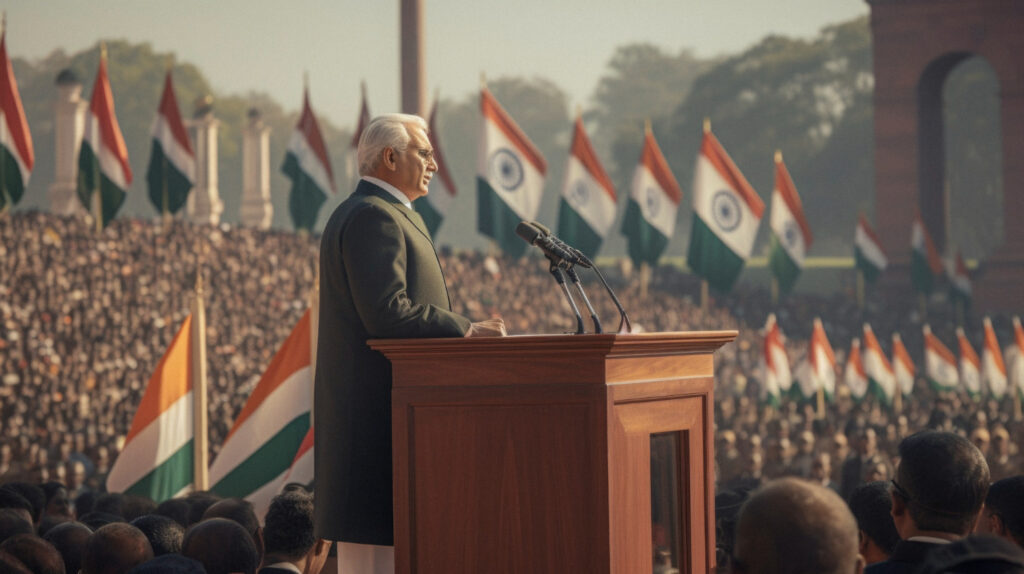The Supreme Court made a major constitutional ruling in April 2025 to clarify the scope of the Governor’s veto powers under Article 200 of the Indian Constitution. Through this verdict, the Supreme Court established rules to stop the improper use of pocket vetoes, thus creating a more responsible state lawmaking system. By curtailing the Governor’s Veto Powers, the judicial decision establishes a new balance between Governors and state administrations, which will strengthen the Indian federalism system.
Understanding Article 200 of the Indian Constitution
Article 200 of the Indian Constitution details the three possibilities for a Governor to handle bills passed by the state legislature. These include:
- Lawful status is bestowed upon the bill after the Governor affirms it.
- Through his act of withholding assent, the bill becomes rejected.
- The Governor sends such bills to the President for examination when they challenge existing Union regulations or when they contain critical national matters.
The Indian Constitution does not grant any Governor’s Veto Powers to remain passive in Article 200. The prolonged decision-making delays by certain Governors became known as a pocket veto, as they maintained indecision permanently on bills presented to them.
The Controversial Case from Tamil Nadu
The judicial intervention emerged from Tamil Nadu because Governor R.N. Ravi prevented action on bills that dated back to 2020. The official government passed ten essential legislative reforms which remained in a status of inactivity when Governor R.N. Ravi refused to take action. Multiple constitutional experts, along with political leaders, criticized the lengthy waiting period because they considered it an improper use of gubernatorial vetoes.
Political experts and legal scholars, part of civil society, realized that these practices weaken legislative authority and destroy the core democratic concept, which shows that representatives ought to maintain legislative power.
The Supreme Court Judgment: A Turning Point
The Supreme Court made history when it declared the pocket veto unconstitutional in its judgment. Article 200 grants the Governor’s Veto Powers, but the Constitution specifies a required period for his use of these powers. The Court directed that:
- Bills need to receive an assent or approval from the President or Cabinet during a period not exceeding three months.
- The legislature must recall the bill for second passage after returning it so that the Governor can issue assent within thirty days.
- The Governor follows directions from the Council of Ministers, which upholds the British parliamentary framework provided in the Indian Constitution.
According to this valuable court decision, indefinite delays violate both fundamental constitutional principles and the process of governance.
Legal and Political Implications
This Supreme Court judgment leads to extensive legal and political impacts that will affect the nation for an indefinite period.
Reinforcing Federalism
Centre-State relations have been unsettled for a long period due to the existing Governor’s Veto Powers. Through pocket veto restrictions, the Supreme Court decision upholds both federal balance and the Constitutionally planned structure of Indian government.
Curtailing Arbitrary Powers
All Governors hold a position as constitutional heads, so they are required to maintain neutrality. Politically influenced obstruction emerged as a result of the unacceptably long duration of delays that occurred in Tamil Nadu. Through this court decision, all governors must exercise their veto powers within the limits of the Constitution.
Improved Legislative Efficiency
The decision shortens legislative delays that occur during the lawmaking process. The decision by the Court to prevent untimely delays from pocket veto helps to move vital laws more swiftly into effect, thus boosting the functionality of rapidly changing societies and economies.
Judicial Oversight
Through this Supreme Court judgment, the judiciary gained the power to review executive inaction, thus establishing that Governors are subject to constitutional evaluation.
Comparison with Global Practices
Multiple parliamentary systems control the head of state’s veto authority through either limited time frames or minimal actual power. The pocket veto system India used was left from colonial times, although the nation has since resolved this practice. India strengthens its democratic alignment by clearly establishing veto limits, which brings its practices closer to those of other nations.
Historical Context of Governor’s Veto Powers
History shows that the Governor’s Veto Powers capabilities emerged during the British colonial period because Governors acted mainly as British representatives. The Constitution established new definitions for this position within a democratic structure after Indian independence. Article 200 contained multiple areas of confusion, mostly because it did not provide any time restrictions during this period.
Constitutional Experts Weigh In
Expert analysts from the field of constitutional law recognize the Supreme Court’s judgment as required for the current times. As noted by Senior Advocate Indira Jaising, the judgment rebuilds faith in the constitutional framework by establishing how Governors should act as facilitators instead of becoming democratic barriers.
Former Attorney General Mukul Rohatgi labeled this judicial decision as one of the most critical determinations about Governor’s Veto Powers throughout recent times. Through this ruling, the system of federalism became stronger while abuses were prevented from occurring.
Future Outlook
The historical ruling predicts it will steer upcoming Governor assignments and modify their expected responsibilities. The established court ruling will enable other constitutional bodies to maintain defined operating boundaries.
A possible amendment process towards Article 200 could begin in Parliament to add judicial timelines from the Court, which will support the judicial interpretation.
Conclusion
The Indian constitutional history witnessed a significant turning point with the Supreme Court’s determination on the Governor’s veto powers. Through this decision, the Court eliminated the pocket veto while setting time restrictions per Article 200, thus upholding values of accountability alongside transparency and democratic integrity. The changing judicial system works towards improving institutional responsiveness to public requirements.
As India continues to navigate its federal journey, this landmark judgment ensures that the role of the Governor, as envisaged by the framers of the Indian Constitution, is restored to its rightful place as a neutral constitutional authority bound by law, not politics.
FAQs for Governor’s Veto Powers
- 1. What are the Governor’s veto powers under Article 200 of the Indian Constitution?
The Governor’s veto powers under Article 200 allow the Governor to either assent to, withhold assent, or reserve a bill passed by the state legislature for the President’s consideration. This article also addresses the pocket veto, which was previously a controversial form of delay.
- 2. What did the Supreme Court ruling on Governor’s veto powers entail?
The Supreme Court judgment curbed the pocket veto, specifying timelines for gubernatorial action on bills, thus preventing indefinite delays. Governors must act within a reasonable time frame and are required to follow the advice of the state’s Council of Ministers.
- 3. What is a pocket veto and why was it controversial?
A pocket veto occurs when a Governor neither assents to nor rejects a bill, effectively stalling the legislative process indefinitely. This practice was deemed unconstitutional in the recent Supreme Court ruling for undermining the democratic process and delaying governance.
- 4. How does the Supreme Court ruling affect Indian federalism?
The Supreme Court judgment strengthens Indian federalism by ensuring that the Governor’s veto powers are exercised within constitutional limits, respecting the autonomy of state legislatures and reducing the possibility of central interference.
- 5. What are the broader implications of this landmark judgment?
The ruling ensures a more efficient legislative process by eliminating the pocket veto and mandating specific timeframes for gubernatorial action. It enhances democratic governance and the role of state assemblies, reinforcing the accountability of the Governor under the Indian Constitution.




Great write-up, I am regular visitor of one?¦s web site, maintain up the nice operate, and It is going to be a regular visitor for a long time.